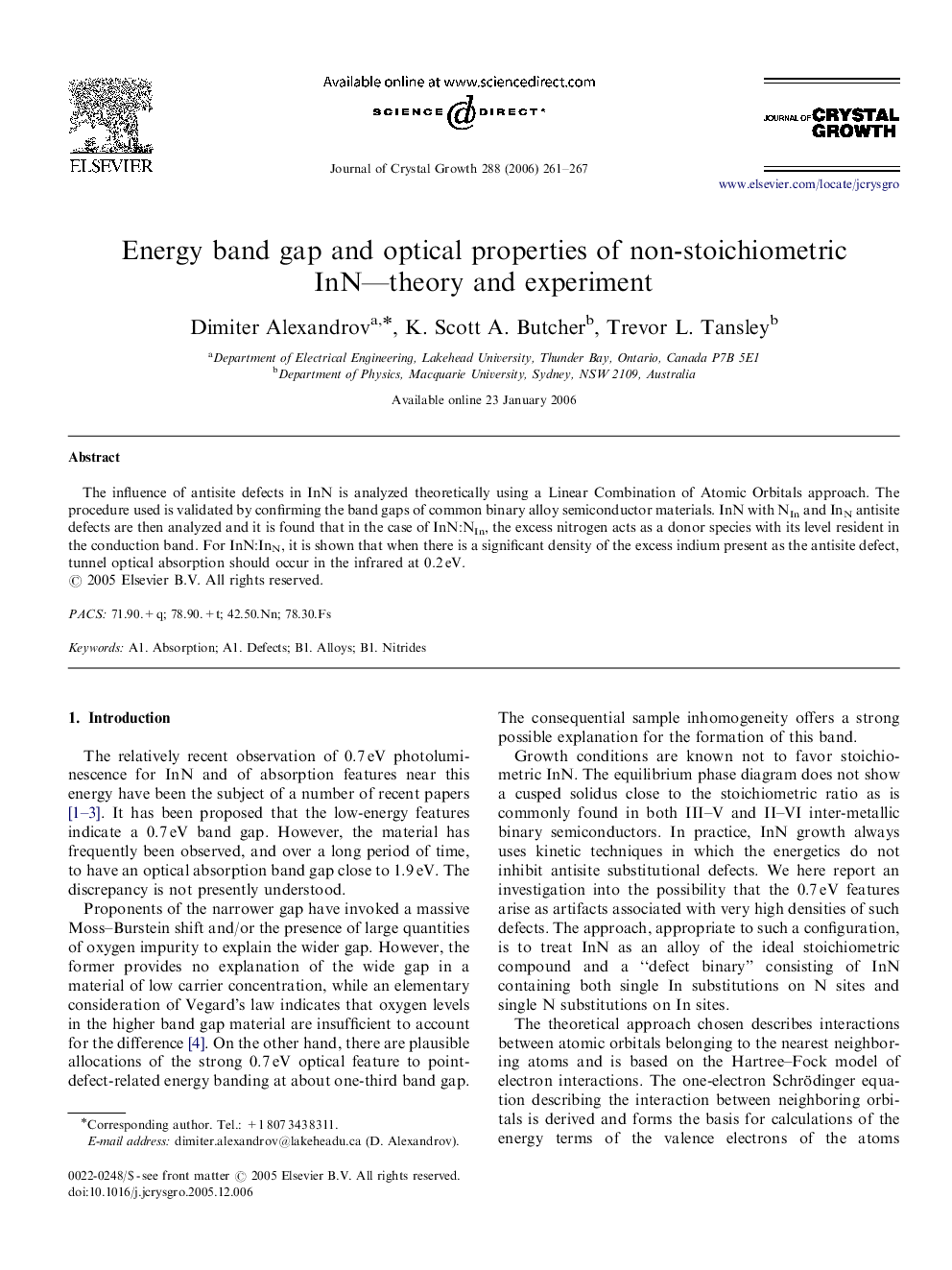| Article ID | Journal | Published Year | Pages | File Type |
|---|---|---|---|---|
| 1796191 | Journal of Crystal Growth | 2006 | 7 Pages |
Abstract
The influence of antisite defects in InN is analyzed theoretically using a Linear Combination of Atomic Orbitals approach. The procedure used is validated by confirming the band gaps of common binary alloy semiconductor materials. InN with NIn and InN antisite defects are then analyzed and it is found that in the case of InN:NIn, the excess nitrogen acts as a donor species with its level resident in the conduction band. For InN:InN, it is shown that when there is a significant density of the excess indium present as the antisite defect, tunnel optical absorption should occur in the infrared at 0.2Â eV.
Related Topics
Physical Sciences and Engineering
Physics and Astronomy
Condensed Matter Physics
Authors
Dimiter Alexandrov, K. Scott A. Butcher, Trevor L. Tansley,
